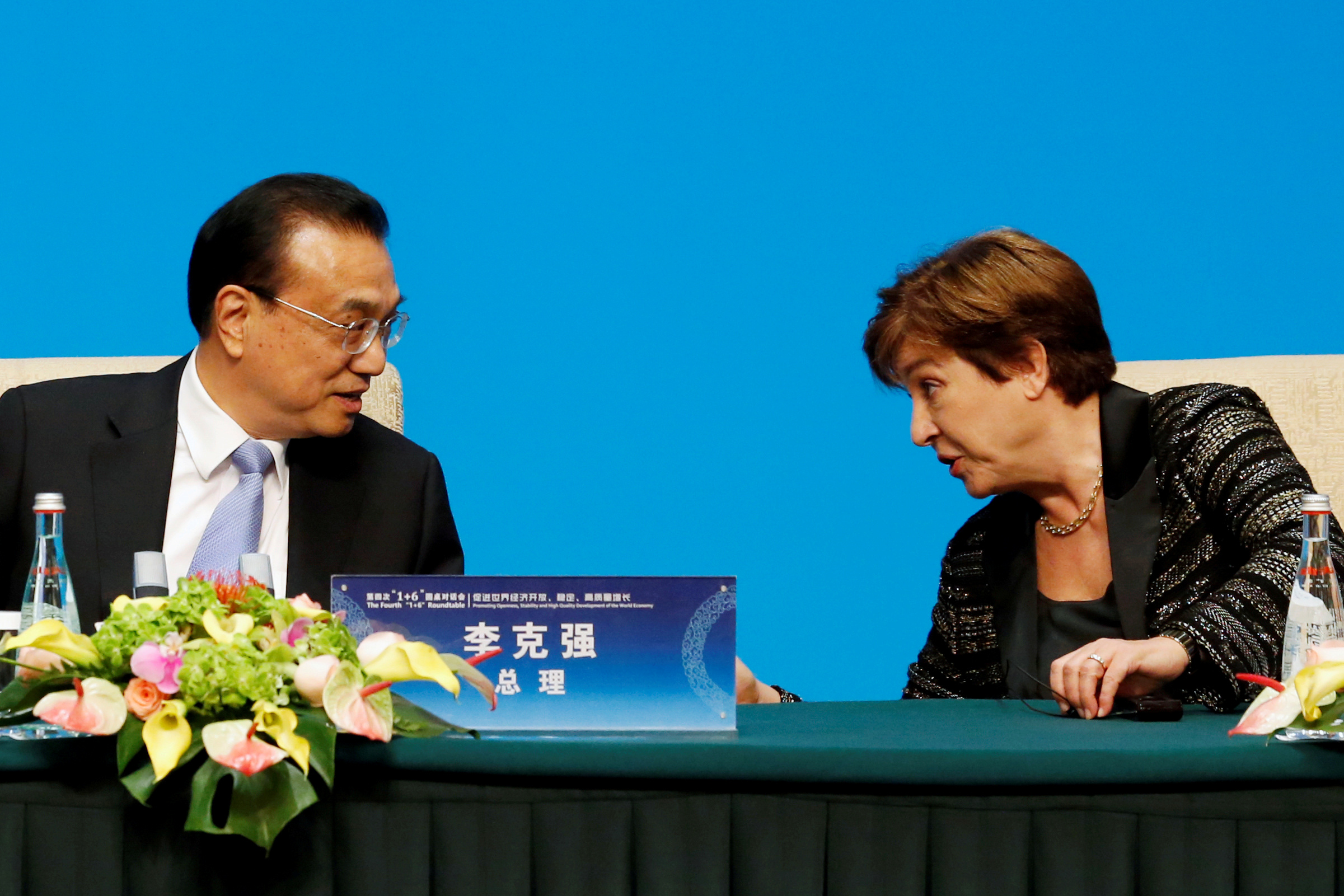
LONDON (Reuters) – Governments and central banks around the world have unleashed unprecedented amounts of fiscal and monetary stimulus and other support over the past month for national economies reeling from the coronavirus pandemic.
Following is a summary of the main policy steps so far.
UNITED STATES
MONETARY STIMULUS – The Federal Reserve cut interest rates by 150 basis points total in two emergency meetings on March 3 (50 basis points) and March 15 (100 bps), taking the federal funds rate to 0-0.25%, along with $700 billion in asset purchases, or quantitative easing (QE).
It also cut the discount window rate by 150 basis points. The Fed followed on March 23 with unlimited and open-ended QE, planned purchases of corporate, municipal government bonds.
LIQUIDITY OPERATIONS AND FUNDING – Trillions of dollars in repurchase agreements flooding the markets with cash; swap lines with other major central banks to provide dollar funding; program to support money market funds; various easing of bank capital buffers; funding backstop for businesses to provide bridging loans of up to four years; funding to help credit flow in asset-backed securities markets; also plans to extend credit to small- and medium-sized businesses.
FISCAL STIMULUS (FEDERAL) – U.S. Senate passed a $2 trillion stimulus package on March 25 including a $500 billion fund to help hard-hit industries and a comparable amount for direct payments of up to $3,000 apiece to millions of U.S. families. The U.S. House of Representatives will vote on Friday.
EURO ZONE
MONETARY STIMULUS – The European Central Bank on March 12 added 120 billion euros to its existing asset-purchase program of 20 billion a month, more quantitative easing (QE). On March 19, the ECB added another 750 billion euros in QE, taking the total to about 1.1 trillion euros this year, and added Greece to the portfolio of bonds it would purchase. On March 26, it eliminated a cap on how many bonds it can buy from any single euro zone country.
LIQUIDITY OPERATIONS AND FUNDING – The ECB cut the interest rate on its Targeted Long-Term Refinancing Operations (TLTROs), cheap loans to banks by 25 basis points to -0.75% on March 12. It provided additional LTROs to bridge bank funding through to June and relaxed capital rules.
FISCAL/OTHER: Suspension of limits on EU government borrowing; considering allowing a precautionary credit line worth 2% of national GDP from the ESM bailout fund.
GERMANY
FISCAL STIMULUS – Agreed a package worth up to 750 billion euros on March 23; 100 billion euros for an economic stability fund that can take direct equity stakes in companies; 100 billion euros in credit to public-sector development bank KfW for loans to struggling businesses; stability fund will offer 400 billion euros in loan guarantees to secure corporate debt at risk of defaulting.
FRANCE
FISCAL STIMULUS – 45 billion euros of crisis measures on March 17 in to the economy to help companies and workers; guaranteeing up to 300 billion euros of corporate borrowing from commercial banks on March 16.
ITALY
FISCAL STIMULUS – Emergency decree worth 25 billion euros on March 16 which suspends loan and mortgage repayments for companies and families and increases funds to help firms pay workers temporarily laid off.
SPAIN
FISCAL STIMULUS – A 200 billion-euro package announced on March 17; half of the economic assistance measures are state-backed credit guarantees for companies and the rest include loans and aid for vulnerable people.
UNITED KINGDOM
MONETARY STIMULUS – The Bank of England cut interest rates by a total of 65 basis points in two emergency meetings on March 11 (50 bps) and March 19 (15 bps); taking Bank Rate to a record low of 0.10%; announces 200 billion pounds of bond purchases.
LIQUIDITY OPERATIONS AND FUNDING – The BoE also introduced a new program for cheap credit and reduced a capital buffer to help banks lend. A BoE corporate financing facility will buy commercial paper with a maturity of up to 12 months from businesses that had an investment-grade credit rating or similar pre-crisis.
FISCAL STIMULUS – A 30 billion-pound stimulus plan on March 11; 330 billion pounds in loan guarantees to businesses; offered to pay 80% of wage bills if staff put on leave up to a maximum of 2,500 pounds ($2,930) a month each – if firms kept them on. Businesses also allowed to temporarily hold on to 30 billion pounds ($35 billion) of value-added tax (VAT).
CANADA
MONETARY STIMULUS – The Bank of Canada cut rates by 100 basis points in two emergency meetings on March 4 (50 bps) and March 13 (50 bps), taking the overnight interest rate to 0.75%.
LIQUIDITY OPERATIONS AND FUNDING – eligible collateral for term repo operations expanded; C$50 billion ($34.6 billion) insured mortgage purchase program; C$10 billion credit support program for businesses.
FISCAL STIMULUS – C$55 billion in tax deferrals for businesses and families; C$27 billion aid package for workers and low-income households.
JAPAN
MONETARY POLICY – The Bank of Japan eased monetary policy by ramping up purchases of exchange-traded funds (ETFs) and other risky assets, including corporate bonds. The central bank also decided to create a new loan program to extend one-year, zero-rate loans to financial institutions.
FISCAL STIMULUS – The government announced 430.8 billion yen ($4.1 billion) of extra spending, much aimed at supporting affected small and medium-sized businesses. The government will also fund upgrades to medical facilities, and subsidize working parents forced to go on leave because of closed schools.
No fiscal stimulus plans have been announced, but something is expected in April, which may include cash payouts. They could be worth more than 30 trillion yen ($270 billion).
AUSTRALIA
MONETARY STIMULUS – The Reserve Bank of Australia cut rates by a total of 50 basis points in two decisions (25 bps at the March 3 meeting and another 25 bps at a March 19 emergency meeting), taking the cash rate to 0.25%; introduces first use of quantitative easing, setting a target of around 0.25% for bond yields.
LIQUIDITY OPERATIONS AND FUNDING – A$90 billion ($53.3 billion) funding facility to banks at fixed rate of 0.25%; A$15 billion purchase program of residential mortgage-backed and other asset-backed securities; A$715 million support program for airlines.
FISCAL STIMULUS – A$66.1 billion in assistance for companies and additional welfare payments; A$17.6 billion package in subsidies for apprentices, small businesses, pensioners and others.
SOUTH KOREA
MONETARY STIMULUS – Bank of Korea cut interest rates by 50 basis points to 0.75% on March 16.
FISCAL STIMULUS – Supplementary budget of 11.7 trillion won; 50 trillion won in emergency financing for small businesses; further loosened key capital flow rules temporarily to encourage local financial institutions to supply more dollars.
CHINA
MONETARY STIMULUS – People’s Bank of China cut its one-year Loan Prime Rate, first introduced in August, by 10 basis points to 4.05% on Feb 20, following various liquidity injections and other mild policy easing. The PBOC cut the cash banks must hold as reserves for the second time this year on March 13, releasing 550 billion yuan ($79 billion).
LIQUIDITY AND FUNDING – China offered easier funding for small- and medium-sized businesses, increasing yuan re-lending and re-discount quotas by 500 billion yuan on Feb 25. Also increased policy banks’ loan quota by 350 billion yuan to make loans targeting these businesses.
FISCAL STIMULUS – China is set to unleash trillions of yuan of fiscal stimulus. The ramped-up spending will aim to spur infrastructure investment, backed by as much as 2.8 trillion yuan ($394 billion) of local government special bonds, according to sources on March 19. The national budget deficit ratio could rise to record levels, sources added.
Various small measures and fiscal expenditure such as tax breaks, reduced power charges and fee reductions.
BRAZIL
MONETARY STIMULUS – Central Bank of Brazil cut interest rates by 50 basis points to 3.75% and eased capital requirements for financial institutions.
LIQUIDITY OPERATIONS AND FUNDING – 1.2 trillion reais ($233.8 billion) central bank program to inject liquidity through purchases of bank loan portfolio packages; new rules allowing banks to offer firms and households increased loans and better terms; central bank intervention in FX markets and repurchases of dollar-denominated sovereign bonds.
FISCAL STIMULUS – 150 billion reais budget boost to support most vulnerable population and jobs; presidential decree declaring national emergency over the coronavirus passed in Congress, allowing the government to waive fiscal targets and free up budget resources. [nL1N
INDIA
FISCAL STIMULUS – The Federal government announced on March 26 a 1.7 trillion rupee ($22.6-billion) economic stimulus plan providing direct cash transfers and food security measures.
SOUTH AFRICA
MONETARY STIMULUS – The South African Reserve Bank (SARB) cut its main lending rate by 100 basis points to 5.25% on March 19.
LIQUIDITY OPERATIONS AND FUNDING – The SARB announced on March 25 a program to buy bonds of varying maturities on the secondary market, but it did not give further details.
(Compiled by Reuters Polls)












